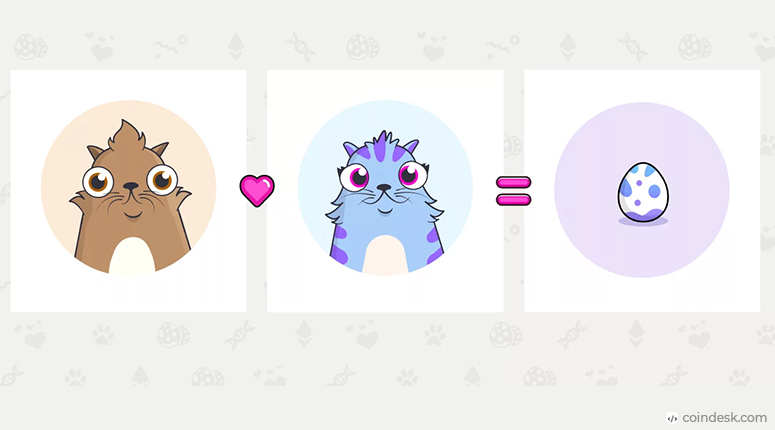
Did you know? The below piece of art, known as CryptoPunk #7804, got sold for $7.5 Million.

CryptoPunk #7804
What?! It's crazy, right?
So what's so special about this? And why are people going crazy to buy this digital art? These are known as Non-Fungible Tokens (NFTs).
Fungibility means the ability of assets to be exchanged or substituted with similar assets of the same value. For example, 5 ten dollar notes can be exchanged for a $50 note. Here, the value remains the same but storing the asset becomes easier. Non-fungible assets are the opposite. Each one is unique and one cannot substitute it for something similar.
So you know how people collect coins or paintings of famous artists. Just like that, NFTs are collectibles with no physical presence. It can be a photo, video, audio, and other types of digital files that are represented as strings of numbers and letters and stored on decentralized ledgers. These ledgers contain encrypted information like who owns the digital asset, who sold it, and when it was sold.
They are like digital assets. Although these NFTs can be viewed by anyone, they can be tracked on blockchains giving the owner proof of ownership other than copyright.
History of NFTsIn 2012, Yoni Asia was the first who put forth the idea of issuing assets into blockchains, a distributed ledger for cryptocurrencies. This led to the introduction of colored coins, small units of bitcoins that represented multiple assets like property, shares of a company, subscription, and digital collectibles. The potential of assets like bitcoins was not explored until December 2014. It was colored coins that laid a foundation for NFTs.
In 2017, Ethereum, a decentralized blockchain, started gaining significance in the American market. This is when Larva Labs released Cryptopunks, unique cartoon characters to trade on the Ehtereum blockchain. Today, there are 10,000 unique CryptoPunks on blockchains. Since these characters were created algorithmically, no two CryptoPunk are alike.
With the increase in popularity, another blockchain game CryptoKitties was released on Ethereum soon after by Dapper labs. In this game, one was allowed to adopt, nurture, breed, and sell cats virtually. Each of these is represented as NFT on Ethereum. This project raised $12.5 million investment, and soon kitties were sold for over $100,000. On May 12the 2018, a CryptoKitty was sold for $140,000.

After witnessing a splurge on CryptoKitties, people began to understand the potential of NFTs, and the NFTs market saw a stellar growth in coming years. More than 100 such projects were released in 1 year.
The demand for NFTs didn't stop here. Famous brands like Nike also patented a system called CryptoKicks to verify the authenticity of their sneakers, and give their customers a virtual experience of the same.
In 2018, a blockchain-based virtual world namely Decentraland raised over $26 million in the initial coin offering.
Growing Popularity of NFTsThe market capitalization of NFT projects has grown by 1785%.
In 2020, the value of NFTs triples to $250 million. In the initial three months, more than $200 million were spent on these digital arts.
Widely used non-fungible tokens marketplaces like Rarible and Opensea saw an increase in their sales. So why all of a sudden, the demand NFTs has grown?
Well, you may consider this as an evolution of fine art. Art enthusiasts like collecting these digital works. Some view it as a sentimental investment. The pandemic and the increase in the value of Bitcoins paved the way for the increase in demand for NFTs.
The demand for unique digital assets has been increasing consistently. Many investors are willing to pay even a higher value just to acquire ownership of NFTs. The reason being, they believe that NFTs will soon become more profitable and the biggest collectible.
Recently, NBA and Dapper Labs collaborated to form an NBA Top Shots NFTs. This allowed the fans and NFTs fanatics to buy and sell video clips of their favorite players. The most expensive top shot sold was LeBron James 'Cosmic Series 1, #29' for over $280,000.
How to Buy and Sell NFTs?To buy NBA top shots one can make use of their credit cards to purchase NFTs. Unlike NBA top shots, other NFTs require some or the other form of cryptocurrency.
The most popular platform to purchase a token is OpenSeas. On this website, you can browse different NFTs like CryptoPunks and bid for the same. The highest bidder gets the ownership of that NFT. Some listings even allow you to buy digital art immediately for a certain set price.
Now, to make this purchase you would require a digital wallet. OpenSeas platform accepts the Ethereum cryptocurrencies called Ether. As of April 12, one ether coin equals 2128.31 USD. Once you connect your digital wallet to the OpenSeas platform, you're good to go. While checking out, the customer needs to pay 'gas fees' to process the transaction. After following the produce, you would become an owner of an NFT.
To sell NFTs you have purchased, you can simply list them on the OpenSeas website. Once someone buys your digital art, the amount gets transferred to the digital wallet you've linked. Now you can use these coins to purchase another NFT.
The negative impact of NFTsNFTs contribute to the generation of millions of tons of plant hearing carbon dioxide emissions. Trading of CryptoArt (another term for NFTs) consumes lots of energy. Ethereum maintains the records on the blockchain through a process called mining, wherein a network of computers using advanced cryptography determine whether the transactions are valid or not, and in doing so uses a lot of energy.
NFTs keep carbon trapped in the ground. Blockchains like Ethereum's estimated annual energy use is more than 30 Terawatt hours (TWh), making a carbon footprint of roughly 15 million metric tons of carbon dioxide.
Platforms like OpenSeas used to trade CryptoArts release 61,000 metric tons of carbon dioxide.
Although, Ethereum plans to shift to a more environment-friendly model, doing so would take up to 2 years.
Craziest NFTs sold so farIt's crazy how non-existent, digital art is getting sold at such a high valuation. They are not delivered to your doorstep, but people are still considering buying NFTs. The FOMO is real. But what do you think? Will NFTs be able to sustain their value, or is it just another fad on the internet?
Latest Updates from around the world
Most read stories, topics, and videos
Latest Updates from around the world